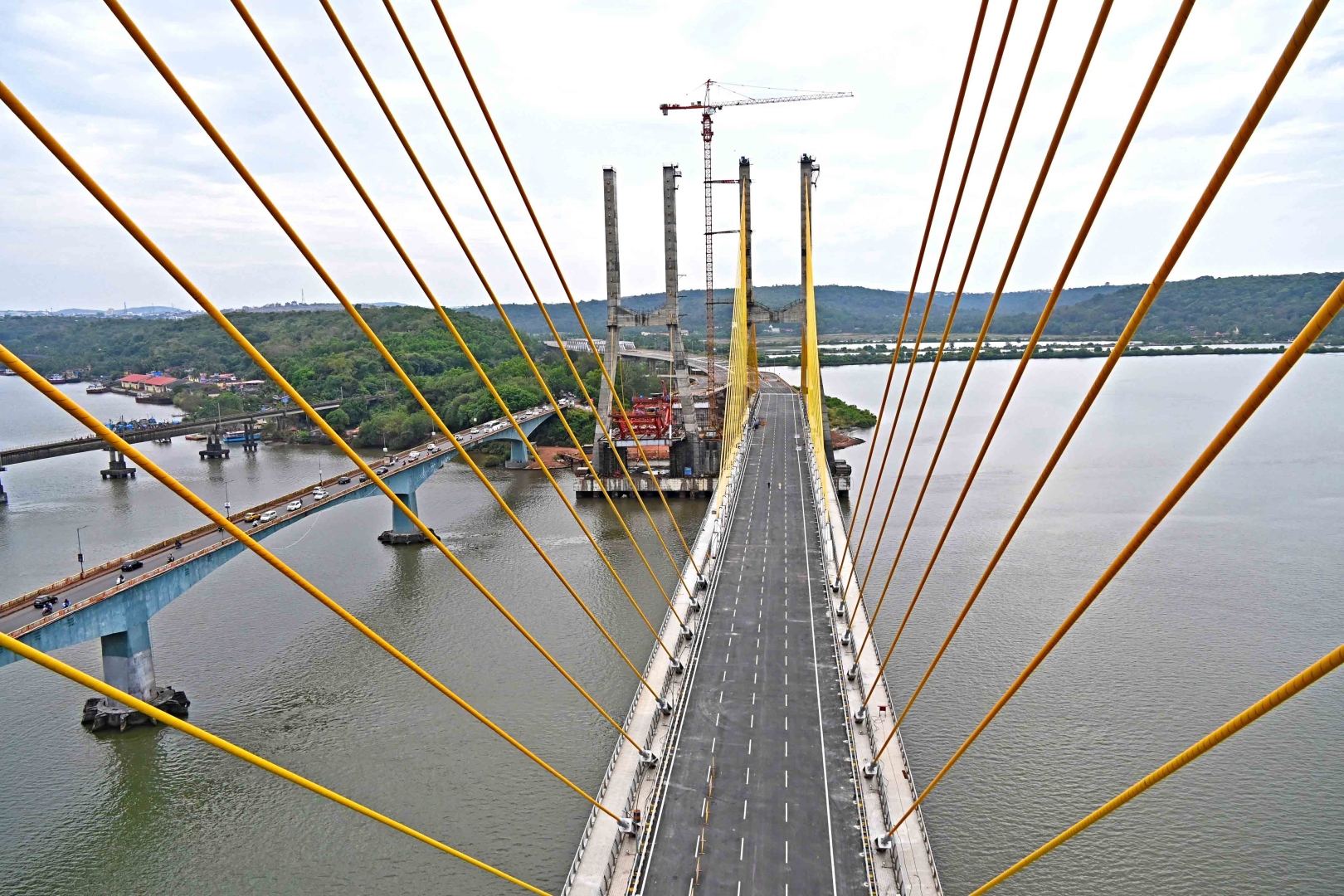The 4-lane western side arm of the new Zuari bridge inaugurated by Union Minister Nitin Gadkari on Thursday and thrown open for traffic on Friday afternoon is a crucial communication link between North and South Goa. Its need was long felt in the face of the tottering, old one. Yet, all issues impeding the seamless flow of traffic along the crucial National Highway-66 (formerly NH-66) may not get resolved as authorities will have to deal with congestion where multiple lanes merge, especially at Verna on the southern side and at GMC, Bambolim on the northern side of the Rs 2,500-odd crore cable-stayed bridge, being described by some as an architectural 'marvel'.

"Finally, the long wait is over" is the one expression most commonly mouthed by commuters between the North and South of Goa since Friday afternoon. Clearly, the new Zuari bridge (one 4-lane arm of it) and its connecting approaches on either side, have indeed brought a sigh of relief for those regular commuters burdened for more than four years by the chaos its construction had caused.
But will it be the end of the traffic woes on this NH-66 (formerly NH17)?
Many woes will be resolved but there will still be immense problems, many believe, at least at two points -- Verna and Bambolim -- where the four lanes of the new Zuari Bridge and its extended approaches intersect with the existing NH-66.
Bambolim intersection
The area around the Goa Medical College in Bambolim is one area where the Zuari Bridge intersects with the old highway on the northern side. Traffic here has been a mess for a long time and authorities have been struggling to come up with an efficient scheme to cater to the orderly movement of vehicles intersecting from multiple directions -- from the west (Dona Paula-Goa University), from the north (Panaji) and the traffic getting in and out of the GMC.
The lack of signage here, leaves riders and drivers clueless and the design of the junction is admittedly erratic. It is an admitted fact that entry and exit points to service the many local communities in villages along the highway, including St Cruz, Merces, Curca, Bambolim, Siridao and Paliem will have to be carefully thought out and finalised.
Verna industrial area
Long traffic jams at Cortalim was one reason that justified the construction of the new Zuari bridge. The other of course was the fact that the outdated design and weakness of the existing old bridge.
Now that the new bridge has been commissioned (one 4-lane half of it), one would assume all the impediments to the free flow of traffic will be done away with. In reality, however, it's easier said than done.
The traffic intersecting from different directions at Verna, where the traffic signals regulate the flow, will still be a problem that will need to be dealt with if the experience of motorists on Friday when the new bridge was thrown open to traffic is anything to go by.
Traffic comes to intersect at the Verna signal junction from four directions -- the two north-south directions from Panaji and Margao, from the west, coming via the 4-lane highway from Mormugao and from the east coming from Ponda via the road that cuts through the industrial estate to join the NH-66.
Entry, exit for villages
Several thickly populated villages hug the NH-66 along the 13.2-kilometre stretch of the new Zuari bridge and its approaches on either side between the Toyota showroom at Verna and the Goa Medical College area at Bambolim. Those residing in these villages are inadequately serviced in terms of providing entry and exit points for them.
Some of these villages include St Cruz, Merces, Curca, Bambolim, Siridao, Paliem, Goa Velha, Pilar, Agacaim, Cortalim and Quelossim. The existing entry and exit points for residents of these villages will have to be worked out from the safety point of view as traffic would be travelling at top speed making signages crucial and imperative.